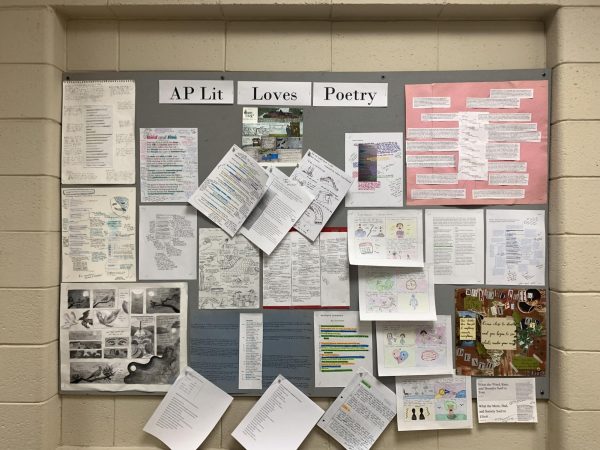The Maasai Visit South
A group of East Africans called the Maasai gave presentations at CB South about their culture and sold Maasai jewelry this past October. The event was sponsored by the World Affairs Club and a charity called the MCEP, or Maasai Cultural Exchange Project.
The presentations occured primarily in Modern World History classes. Jewelry made of “seeds, bone from animals, and glass beads” were sold during all lunches for $5-$20.
MCEP founder Ms. Eckelmeyer said the jewelry is made “by hand and it is very unique and beautiful” and may “remind you of Native American designs.”
Ms. Eckelmeyer started the MCEP after meeting the Maasai at a New Jersey train station. Ms. Eckelmeyer said the Maasai were on their way to speak to the UN and caught her attention because her daughter, a former CB South teacher, was going to Kenya to teach for a year.
“In the past nine years [we] have fortunately raised money to drill seven wells and educate over 100 students, many girls who would be married off if they didn’t have school fees,” said Ms. Eckelmeyer.
The visiting group is composed of three Maasai individuals: two women and a man.
John Parsitau, as a Maasai man “helps defend the village from wild animals” and also works with the MCEP to “distribute funds to schools for Maasai children,” said Ms. Eckelmeyer.
The two women, Susan Naserian and Grace Salau, both make and sell jewelry, and “supervise a women’s jewelry cooperative,” explained Ms. Eckelmeyer.
Since the construction of the wells, the Maasai have been able to begin growing vegetables and raising poultry. Three greenhouses have been constructed.
Most children must walk five miles or more to attend school five days a week. The roads are often not safe for travel due to wild animals, and children therefore start school when they are older.
The Maasai originally inhabited lush lands, but due to government intervention to create national parks and reserves, the Maasai were forced to relocate to arid and semi-arid locations where clean water is difficult to find and drought is common.
According to social studies teacher Ms. Nulty, it was during the era of “British imperialism” when the Maasai lost their homeland. The Maasai had lived in fertile regions that were targeted for British settlers to colonize.
The simple act of getting water often involves walking extreme distances, ranging from seven to nine hours, said Ms. Nulty. The Maasai have a tradition of communal living, so everyone in the tribe has access to water and land.
“The women are often the ones who get water,” said Ms. Nulty, co-sponsor of the World Affairs Club. With the construction of water wells, the commute for water is greatly shortened, allowing the women of the village to work on their education. Susan Naserian, one of the women who will be visiting CB South, was able to benefit from this program sponsored by the MCEP.
The World Affairs Club sponsored the event as it was a “great way for kids to help and gain exposure to other cultures,” said Ms. Nulty. The Maasai often speak at UN conferences to request international aid to help the Kenyan government drill water wells.
The MCEP have also developed a film fund to fund a documentary called Quench. The original documentary was a six minute student film directed by Skylar Bird, a Bucks County teen.
The MCEP would like to film a full-length documentary about the Maasai.
“The power of one person is not that small,” said Ms. Nulty.


